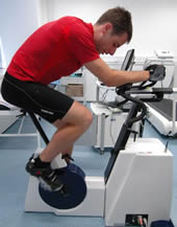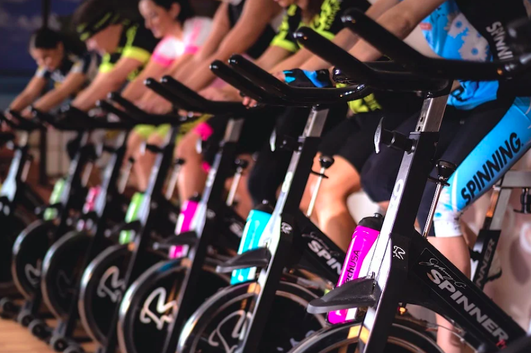
The aim of this section is to give you an idea of changes you could make to your training (without a racket) to help boost your fitness on court, I have tried to structure these ideas so the tips should be relevant regardless of your age or ability.
To keep you going I have included some motivational quotes throughout the article, I hope they help!
Many professional squash players structure there training periodically. They will focus on strength for a couple of months, then fitness and finally speed in an attempt to push the boundaries of their body. For most of us we don’t have the time but that doesn’t mean we can’t make massive improvements to our games through even small and subtle changes.
To keep you going I have included some motivational quotes throughout the article, I hope they help!
Many professional squash players structure there training periodically. They will focus on strength for a couple of months, then fitness and finally speed in an attempt to push the boundaries of their body. For most of us we don’t have the time but that doesn’t mean we can’t make massive improvements to our games through even small and subtle changes.

Mark Fuller (UK-Racketball) on interval training
The best advice I received was when I was told to begin to structure my training more periodically. I have always had the ability to keep going on court and off, even when I haven’t been at my fittest I tend to just get very tired (and slow) but there is rarely a ball I don’t run for. When I first started taking squash seriously and started to get very fit I went for loads of long runs and gruelling gym sessions that involved the treadmill, cross trainer and bike, but Mark Hornby pointed out to me that this was not going to give me the fitness base I would need to call on for a squash match. On a squash court whether you are playing squash or racketball there are times you need to work very hard but in most instances this is only for a short period before you are then able to rest and recover before your next really hard rally. Marks advice was to change my training to mimic the type of fitness I would require.
I took on his advice and began to structure the training so it was less focused on long slow sessions and instead started to focus on intervals. The idea behind this would be that you would work hard, then rest and then work hard again. This would be realistic to what would be happening to your body on a squash court. Experts have now speculated that this may be the best way to raise your overall fitness regardless of what sport you play. Below I have included some examples of how you could structure interval training, you will see that a lot of the sessions are quite short around 20 minutes in total. A good training rule is it’s not how far you run, but how hard you run that counts.
The best advice I received was when I was told to begin to structure my training more periodically. I have always had the ability to keep going on court and off, even when I haven’t been at my fittest I tend to just get very tired (and slow) but there is rarely a ball I don’t run for. When I first started taking squash seriously and started to get very fit I went for loads of long runs and gruelling gym sessions that involved the treadmill, cross trainer and bike, but Mark Hornby pointed out to me that this was not going to give me the fitness base I would need to call on for a squash match. On a squash court whether you are playing squash or racketball there are times you need to work very hard but in most instances this is only for a short period before you are then able to rest and recover before your next really hard rally. Marks advice was to change my training to mimic the type of fitness I would require.
I took on his advice and began to structure the training so it was less focused on long slow sessions and instead started to focus on intervals. The idea behind this would be that you would work hard, then rest and then work hard again. This would be realistic to what would be happening to your body on a squash court. Experts have now speculated that this may be the best way to raise your overall fitness regardless of what sport you play. Below I have included some examples of how you could structure interval training, you will see that a lot of the sessions are quite short around 20 minutes in total. A good training rule is it’s not how far you run, but how hard you run that counts.
Court Sprints

Basic Court Sprints
Very simple (to explain anyway) just run for 1 minute and then have 1 minute rest. To begin with you might be running 14 or 16 in a minute (there and back counts as 2!) but you can gradually increase this number as you get fitter and stronger. If you are starting to get to a point where you don’t feel you can get any quicker try reducing the rest from 1 minute to 50 seconds and then 40 and try to keep the same pace, trust me it will all get a lot harder.
Court Sprint Pyramid Runs
Another option with court sprints when you have a group is pyramid running. Find a partner and run alternately in a pyramid as shown below.
A : 2 then B : 2
A : 4 then B : 4
A : 6 then B : 6
A : 8 then B : 8
And then go back down the pyramid (it’s always easier going downhill)
A : 6 then B : 6
A : 4 then B : 4
A : 2 then B : 2
Obviously you can make the pyramid as high as you and your partner like. The big advantage to this training is that when you have only 2 or 4 sprints you can do these quite fast which can help you increase your speed but you might end up going as high as 20 which can really test your stamina. It’s also much nicer to do the running with someone than on your own.
Very simple (to explain anyway) just run for 1 minute and then have 1 minute rest. To begin with you might be running 14 or 16 in a minute (there and back counts as 2!) but you can gradually increase this number as you get fitter and stronger. If you are starting to get to a point where you don’t feel you can get any quicker try reducing the rest from 1 minute to 50 seconds and then 40 and try to keep the same pace, trust me it will all get a lot harder.
Court Sprint Pyramid Runs
Another option with court sprints when you have a group is pyramid running. Find a partner and run alternately in a pyramid as shown below.
A : 2 then B : 2
A : 4 then B : 4
A : 6 then B : 6
A : 8 then B : 8
And then go back down the pyramid (it’s always easier going downhill)
A : 6 then B : 6
A : 4 then B : 4
A : 2 then B : 2
Obviously you can make the pyramid as high as you and your partner like. The big advantage to this training is that when you have only 2 or 4 sprints you can do these quite fast which can help you increase your speed but you might end up going as high as 20 which can really test your stamina. It’s also much nicer to do the running with someone than on your own.
Gym Bike

This training session was actually given to me by Nick Matthew at The Hallamshire, we had just had a hit and went in the gym to finish off the training session.
2 minute warm up at moderate intensity.
5 seconds peddling as hard as you can. 55 seconds recovery at an average rate, I use the same rate that I used for the warm up.
This still wants to be quite tough, you’re not stopping but nowhere near as hard as when you go flat out.
10 seconds as hard as you can.
50 seconds at recover pace.
15 seconds as hard as you can.
45 seconds at recovery pace.
20 seconds as hard as you can.
40 seconds at recovery pace.
15 seconds as hard as you can.
45 seconds at recovery pace.
10 seconds as hard as you can.
50 seconds at recovery pace.
5 seconds as hard as you can.
This is a great session and really tough, by the time you reach the 20 seconds your legs will be really burning. Try changing the length and intensity of the intervals till you find what works for you.
Great for racketball (and squash) how many rallies last more than 20 seconds. If Nick Matthew is using it regularly it must be doing something good.
2 minute warm up at moderate intensity.
5 seconds peddling as hard as you can. 55 seconds recovery at an average rate, I use the same rate that I used for the warm up.
This still wants to be quite tough, you’re not stopping but nowhere near as hard as when you go flat out.
10 seconds as hard as you can.
50 seconds at recover pace.
15 seconds as hard as you can.
45 seconds at recovery pace.
20 seconds as hard as you can.
40 seconds at recovery pace.
15 seconds as hard as you can.
45 seconds at recovery pace.
10 seconds as hard as you can.
50 seconds at recovery pace.
5 seconds as hard as you can.
This is a great session and really tough, by the time you reach the 20 seconds your legs will be really burning. Try changing the length and intensity of the intervals till you find what works for you.
Great for racketball (and squash) how many rallies last more than 20 seconds. If Nick Matthew is using it regularly it must be doing something good.
Ghosting

Another great way to train your body for racketball is to do interval ghosting. This session is so sport specific it’s probably the best way to train for the sport.
The general idea is to mimic the movements that you make in a match but because the exercise doesn’t end when you make a mistake (as would happen in a normal rally) you are able to work much harder and push your fitness boundaries. Most players do this with their racket to make it as realistic as possible but you can use cones instead. The major problem with ghosting is the same as its great advantage, you are using the same muscles and doing the same movements that you would in a match. This means if you are carrying an injury or were looking for routines that might protect your body by limiting the exposure of certain muscles or movements that your body already overuses in your racketball play, ghosting will not be able to help.
Try moving to each corner in turn, practice your movement, look at where your feet are going and try to stay balanced when you come into and out of a shot. Focus on trying to keep your technique as good as you can, for example keeping your racket up as you move into the ball.
The general idea is to mimic the movements that you make in a match but because the exercise doesn’t end when you make a mistake (as would happen in a normal rally) you are able to work much harder and push your fitness boundaries. Most players do this with their racket to make it as realistic as possible but you can use cones instead. The major problem with ghosting is the same as its great advantage, you are using the same muscles and doing the same movements that you would in a match. This means if you are carrying an injury or were looking for routines that might protect your body by limiting the exposure of certain muscles or movements that your body already overuses in your racketball play, ghosting will not be able to help.
Try moving to each corner in turn, practice your movement, look at where your feet are going and try to stay balanced when you come into and out of a shot. Focus on trying to keep your technique as good as you can, for example keeping your racket up as you move into the ball.
Fitness session bolt ons
The following fitness sessions are designed to be done at the end of a normal session. This might be with a friend as you are preparing for an up and coming tournament or on your own as part of solo practice.
| uk-racketball_fitness_training_bolt-ons.pdf | |
| File Size: | 335 kb |
| File Type: | |
| uk-racketball_fitness_bolt-on_ghosting_and_jumping.pdf | |
| File Size: | 292 kb |
| File Type: | |



